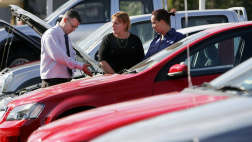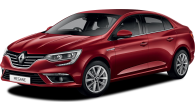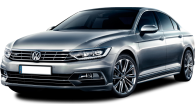That is, as long as that buyer is not in Australia. The 220kW, 7.9-litres/100km limousine with a mere 186g/km CO2 emission level powers Mercedes-Benz into a new era of luxury.
But the most disappointing feature of the S400 – Mercedes’ first production hybrid and the world’s first production hybrid with lithium-ion batteries — is that there are no current plans for a right-hand drive version.
The closest one for which Mercedes would speculate about a right-drive model is for the next generation S-Class, due in 2012.
That’s a long time to wait for a car, especially one that has only just been released in its home market.
The disappointment showed on my face on a run in the car through Germany’s Black Forest region, where the undulating and twisting narrow roads have no patience for weak engines. The relatively modest 3.5-litre V6 petrol engine is usually starved of brisk off-the-mark sprints, weighed down by the S-Class 1.9-tonne mass and its own leisurely power output.
But mated with a n electric motor, situated between the engine and the seven-speed automatic gearbox, it becomes subtly more responsive and with a big boost to low-end delivery.
As it caught the evening traffic snarl out of Stuttgart, it switched off its engine when stationary to save fuel. I had expected it to crawl forward with the snail’s pace of the traffic, quietly using only its motor in a similar fashion to the Lexus and Toyota Prius. But it didn’t, instead always silently starting the engine and letting petrol fuel the ride.
The lithium-ion batteries are considerably smaller — about 10 per cent of the size and weight — than its rivals. But they may also be less powerful to act as stand-alone power.
The battery box sits under the bonnet so there’s no change to the luggage area in design, layout and available space. That is a big bonus compared with its rivals that use the bigger, heavier metal-hydride batteries.
Why has Mercedes-Benz grasped the hybrid concept and set it free in its latest S-Class saloon? Simply because it believes performance and luxury can co-exist with a more environmentally-conscious powerplant.
In wheeling out the S400 Hybrid, Mercedes takes on Lexus and for the future, a potential stream of upmarket rivals.
It will lead to more hybrid examples and, within two years a diesel-hybrid version that promises much greater emission and fuel use reductions, predicts the company’s high-voltage energy manager Dr Martin Hermsen.
So impressive is the S400 Hybrid that it overshadowed the concurrent launch of the 2009 S-Class make-over model. This is the car that leads into the 2012 next generation model.
For Australia, the S400 will be only a dream. But eight models will lead the S-Class into the Australian market starting in August with the S350 and S500 petrol-engine versions. These will be followed by the S350 CDI turbo-diesel, the S350 and S500 long wheelbase versions, then the S600, S63 and S65.
Mercedes-Benz Australia spokesman David McCarthy says prices will remain about the same as the current range.
In a similar vein, little has changed about the 2009 S-Class in comparison to the outgoing series. Yes, a closer look sees restyled head and tail lights, a new grille and mirrors.
New systems are included inside the car and theres new technology such as the split-image monitor that allows the driver to see the satellite navigation map while the front passenger enjoys a movie.
The S-Class is still a big car yet retains a conservative style that lures a mature market. Undoubtedly, it’s impressive and — as the S-Class has since 1951 — speaks without words about the importance of its owner.
Mercedes-Benz S350 2009: CDI
| Engine Type | Diesel Turbo V6, 3.0L |
|---|---|
| Fuel Type | Diesel |
| Fuel Efficiency | 7.7L/100km (combined) |
| Seating | 5 |
| Price From | $36,190 - $43,120 |
| Safety Rating |
|



.jpg)
.jpg)





















